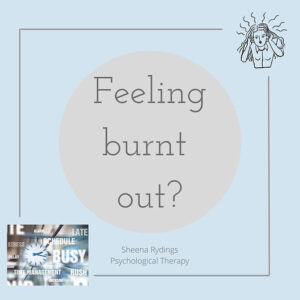Living Without Constant Worry: Reclaiming Your Life from the Fear of Pain
Can you imagine living without constantly worrying that every pain is something serious? Without worrying that your pain means things are getting worse? How empowering and freeing would that be?
For many who live with chronic pain, the fear of pain itself can become even more debilitating than the physical discomfort. It creates a cycle of anxiety, hypervigilance, and tension that actually amplifies the pain experience. This fear adds emotional weight, and over time, it can take over your daily life.
But what if we could break that cycle? What if, instead of fearing pain and constantly worrying about what it might mean, you learned to feel safe in your body again? While it’s not a quick fix, there are proven ways to retrain your mind and body to move away from that constant fear and regain a sense of control. Here’s how:

Start With Gentle Movements
One of the simplest ways to begin is by incorporating gentle movement. When you live with chronic pain, it’s common to avoid moving out of fear that it will make things worse. However, this avoidance can actually lead to more discomfort over time. By starting with movements that are in line with your current baseline and then gradually increasing over time, you can teach your nervous system that movement isn’t dangerous.
These movements don’t have to be strenuous; in fact, the gentler, the better. Think of it as slowly building trust with your body. As you develop this trust, you’ll begin to feel more in control, more confident that not every movement or twinge means something is wrong.
Combine Movement with Mindfulness
Once you’ve begun moving, integrating mindfulness into your routine can help you remain present and grounded, even when discomfort arises. Mindfulness encourages you to observe sensations in the body without judgment or immediate reaction. Rather than automatically jumping to catastrophic thinking (“This pain must mean something is wrong!”), mindfulness allows you to pause and view your experience from a place of calm curiosity.
One easy mindfulness-based practice is box breathing, a technique used to regulate the breath and calm the nervous system. Here’s how you can start:
- Inhale for a count of four.
- Hold your breath for four counts.
- Exhale for four counts.
- Hold the exhale for another four counts.
Doing this for just a few minutes a day can significantly reduce your stress and anxiety levels, helping you feel more at ease with your body.
Diaphragmatic Breathing to Reduce Stress
Another powerful psychophysiological tool is diaphragmatic or “belly” breathing. This type of breathing helps activate the parasympathetic nervous system, which is responsible for rest and relaxation. Chronic pain sufferers often breathe shallowly, which can keep their bodies in a heightened state of stress. Shifting to diaphragmatic breathing allows you to soothe your nervous system, which in turn can reduce pain and tension.
To practice, place one hand on your chest and the other on your belly. As you inhale, aim to expand your belly, rather than your chest. Hold the breath for a moment, then exhale fully. Try practicing this for three minutes a day-it can be incredibly grounding.
Facing the Fear Head-On
One of the key elements in overcoming chronic pain-related anxiety is addressing fear head-on. Often, we become consumed by negative thoughts like “I’ll never get better” or “This pain is a sign of something worse.” While it’s natural to have these thoughts, it’s important not to get stuck in them.
When these thoughts come up, recognise them, but instead of allowing them to control you, try shifting your focus to more balanced and realistic thoughts. For example, you might replace “I’ll never get better” with “I am learning ways to manage my pain and live a fuller life.”
Cognitive Behavioral Therapy (CBT) is highly effective in helping reframe these types of negative thought patterns. By challenging catastrophic thoughts and focusing on balanced thinking, you can regain a sense of hope and control over your pain.

Taking Back Control
Living without constant worry is not about pretending the pain isn’t there; it’s about learning how to stop fear from making the pain worse. As you incorporate movement, mindfulness, and breathwork into your daily routine, you’ll begin to feel safer in your body. You’ll slowly realize that pain doesn’t always mean something is wrong or getting worse. Over time, you’ll retrain your mind to focus on what you can do and how you can cope, rather than dwelling on the worst-case scenario.
It’s a journey, but one that can help you reclaim control over your life. Facing fear and learning new ways to manage pain will allow you to break free from that constant worry and embrace a future with less anxiety and more empowerment.
You deserve to live without constant fear-start taking the steps today.




